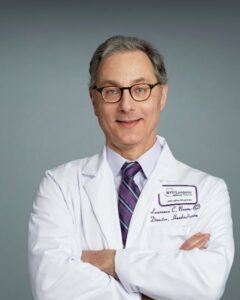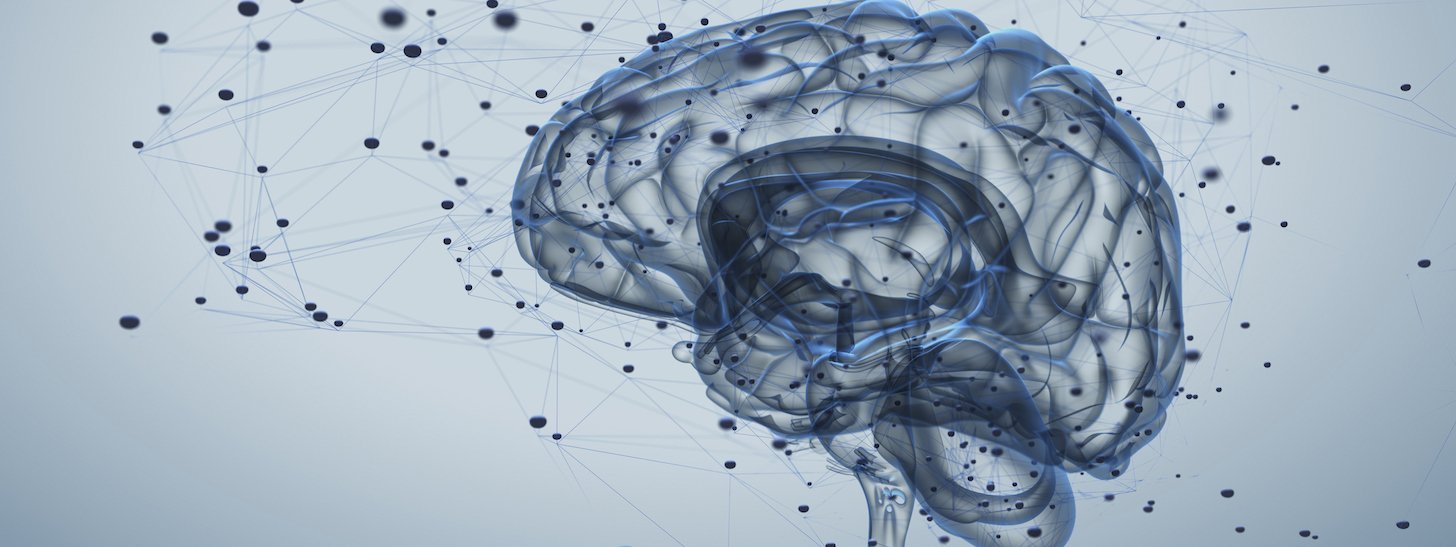December 2021 Society Spotlight
 Meet Lawrence Newman, MD, FAHS
Meet Lawrence Newman, MD, FAHS
How apropos that it is the day before Thanksgiving as I sit here writing this. I just attended (virtually) my 34th Scottsdale meeting and looking back I am reminded how lucky and thankful I am to be part of the family that is the American Headache Society.
Being active in Headache Medicine was almost preordained. Having lived much of my life with undiagnosed migraine and the stigma and disability that attends it, I was shocked, relieved, and dismayed to self-diagnose myself during medical school. Many have opined that this is what fueled my desire to become a neurologist and ultimately choose a career in headache. Yet I think that is probably only partly true. To be honest, I found the study of headache disorders to be immensely fascinating, despite the huge voids that existed in our knowledge back then. During my neurology residency interviews, when I expressed my desire to pursue a career in Headache Medicine (the term was not yet coined back then!), here too I found myself subjected to the same stigma that I experienced as a patient; why waste your career treating people with headache?
Yet the interaction I experienced while interviewing with Dr. Seymour Solomon at Montefiore shaped my career path forever. He together with Dr. Richard Lipton became my Fellowship mentors, and ultimately my colleagues and friends. They not only taught me the intricacies of caring for people living with migraine and other disorders that cause headache and facial pain; they were instrumental in educating me about the importance of teaching others and how to advocate for my patients. They also taught me what being a good mentor implies. Early in my career, I proposed an idea to treat menstrual migraine employing a short-term preventive strategy with sumatriptan. Dr. Lipton thought it would not work but did not dissuade me from trying. The pilot study proved successful, and Richard never fails to bring up the fact that I had the foresight to develop a new treatment paradigm despite his misgivings; and it has shaped the way I interact with my fellows over the years. Richard and Sy also introduced me to AHS.
I am thankful for having the opportunity to be an active member of the Society. Being part of AHS allowed me to build on the skills Drs. Solomon and Lipton gave me. Over the more than 3 decades I have been involved with AHS, I have given numerous lectures related to patient care, I have been a member of the Education Committee, and had the privilege of being part of and ultimately Course Co-director of the Scottsdale meeting. I was fortunate to be elected to the AHS Board of Directors in 2006 and am thankful for being asked to join the Executive Committee in 2010.
I served as AHS President in 2014-2016, during which time I was surrounded by incredible people on the AHS Board of Directors. Although we accomplished many innovative initiatives, I am most proud of two projects that continue today: The Emerging Leaders Program allows the Society to identify and nurture future leaders. This program, now in its 6th year, teaches candidates about the opportunities that exist within AHS and assigns them to a project that has been designated as holding importance to AHS or AMF. Participants are assigned a mentor who is an established leader within AHS or AMF who helps guide them through the project; but these emerging leaders are expected to collaborate with their teammates to design and implement the project. Candidates are taught about what makes a good leader, how to collaborate with others, and gain insights into the psychology of leadership. One only needs to look at the previous graduates to see that this program has been instrumental in shaping the leadership of tomorrow. When I see one of the program graduates advance, I imagine I feel the way Dr. Lipton did when I was early in my career. The Bridge Program, a teaching course developed and given by our nurse practitioners and physician assistant members to other Advanced Practice Providers in the community was conceived to target new NPs and PAs who were caring for patients with migraine. This program was modeled after the Comprehensive Migraine Educational Program but modified to meet the specific needs of our non-physician colleagues who play an integral role in caring for patients living with headache disorders.
I was thankful that during my tenure on the AHS Executive Committee, I was lucky to be in attendance when Drs. David Dodick and Barry Baumel proposed that AHS form the American Migraine Foundation: a committee to meet the needs of patients we represent. One of my goals during my Presidency was to ensure the success of the Foundation.
For the past year and a half, I have been Chair of the American Migraine Foundation. Working closely with our Executive Director, Ms. Nim Lalvani, our Program Manager, Ms. Heather Phillips, and the Executive Committee, Drs. Christine Lay (Vice-Chair), David Dodick (Past-Chair) Ken Shubin Stein (Treasurer) and Ms. Deborah Henscheid Lorenz (Secretary) this past 18 months has been a whirlwind of activity. We have drafted and approved our bylaws, put together a Board of Directors and are awaiting IRS approval of our 501(c)3 status. Our membership continues to expand, our flagship Move Against Migraine Campaign continues to flourish, and our Migraine in the Workplace Advocacy Program partnership with IHS-GPAC continues its national and international reach. AMF works closely with AHS leadership, and we continue to collaborate on many projects. As I said during my recent talk in Scottsdale related to clinician advocacy as an antidote to burnout, we at AMF welcome your participation, support, and suggestions as we advocate for our patients.
Let me end by again expressing my thanks for being asked to write this piece. Being a long-time member of AHS has not only allowed me to pursue and hone my passions, but helped me learn as well as educate, and mentor others as others have mentored me. But more importantly, belonging to AHS has allowed me to meet other like-minded people, many of whom have become my closest friends.
Lawrence Newman, MD, FAHS


